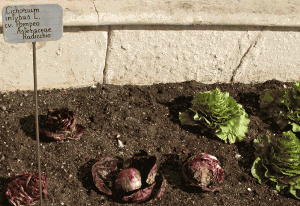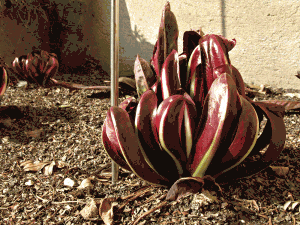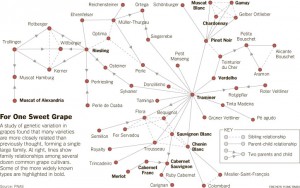- Clovefield.
- They Eat Invasives, Don’t They?
- The Wrong Seeds.
- Seeds of One’s Own.
- Bee Photographs.
- Clay Pigeons.
More on ancient Roman pills
What I missed when I wrote about the 2000-year-old Roman pills a couple of days back is that the research was highlighted by Discover magazine as one of the Top 100 Stories of 2010. In addition, Emanuela Appetiti, one of the researchers involved, kindly pointed me to a story at AoLNews which has lots more photos and another one in the Washington Post. She also gave me this nice bit of news:
…I am happy to inform you that Alain Touwaide and myself, along with Rob Fleischer, the geneticist who did the DNA analysis of the ancient medicines, will be in Rome in mid-May 2011 (on the occasion of the “Night of the Museums”) to present at “La Sapienza” University this research. For the first time, we’ll be all there: the three of us and the staff of the Soprintendenza di Firenze, who did the archeaological digging and first analysis. The event in Rome will be on May 14, 2011, at the faculty of Letters.
Looking forward to that. In the meantime, here’s a very recent interview with Alain Touwaide, courtesy of the BBC. Thanks, Emanuela.
Radicchio diversity
Following in Luigi’s footsteps, the botanic gardens at Padua beckoned. The oldest botanic gardens in the Old World (Wikipedia is wrong; the New has older) they have operated continuously in the same place since 1545. A freezing February day was not ideal to see plants, and precious few of the labels denoted anything directly edible as food. I was not, however, entirely disappointed, for in a sunny bed in the lee of a building was a display of perhaps the region’s most famous crop: radicchio.
The picture above shows an old local variety, Variegato di Castelfranco, and Otello, a modern cultivar. Which, naturally, sent me scurrying to discover more about their history and breeding. There isn’t, actually, a huge amount. One study, of which I’ve seen only the abstract, examined DNA diversity of the five major types. Turns out that if you compare pooled bulk DNA from six individuals of each type, the different types are easy to distinguish. If, on the other hand, you look at DNA from individuals, the distinctions disappear. The variation within a single type is much greater than the variation among the different types. This, the researchers say, indicates that the types have maintained their “well-separated gene pools” over the years. An earlier paper (available in full) had come to a similar conclusion about the populations, with what seems like an ulterior motive: 1
The molecular information acquired, along with morphological and phenological descriptors, will be useful for the certification of typical local products of radicchio and for the recognition of a protected geographic indication (IGP) mark.
And lo, it came to pass. Four types (I think early and late Rosso di Trevisos are included in one designation) got their Protected Geographical Indication in 2008 and 2009. That’s late — tardivo — in the photograph below.
Nibbles: Vegetables training, Genebanks and genomics, Kew and CWR, AnGR ABS
- AVRDC’s 30th International Vegetable Training Course Vegetables: From Seed to Table and Beyond.
- Cameron Peace’s excellent presentation on genomics and fruit genebanks at the recent PAG symposium organized by NPGS staff Chris Richards (Ft. Collins) and Clare Coyne (Pullman).
- Kew’s latest Samara newsletter does crop wild relatives.
- Exploring the need for specific measures for access and benefit-sharing of animal genetic resources for food and agriculture. Results of a workshop.
Is lack of sex really the problem for grapes?
There’s a very interesting article in the New York times reporting on a major investigation of the molecular diversity among grape cultivars.
The report is based on a big paper in PNAS, which I confess I have not had time to read carefully. That said, a few things about the NYT’s coverage confuse me. One is the whole depiction of “relatedness”.
Thus merlot is intimately related to cabernet franc, which is a parent of cabernet sauvignon, whose other parent is sauvignon blanc, the daughter of traminer, which is also a progenitor of pinot noir, a parent of chardonnay.
This web of interrelatedness is evidence that the grape has undergone very little breeding since it was first domesticated, Dr. Myles and his co-authors report in the Proceedings of the National Academy of Sciences.
So how did those varieties arise? Maybe breeding means only “deliberate crosses made by a breeder”. Are they saying that the molecular data support the breeding records? Or are actual breeding records, especially for the older and better-known varieties, too sketchy to know? There’s more too, but I’m going to have to find time to read the PNAS paper properly. Or maybe you already have, in which case, feel free to comment.


